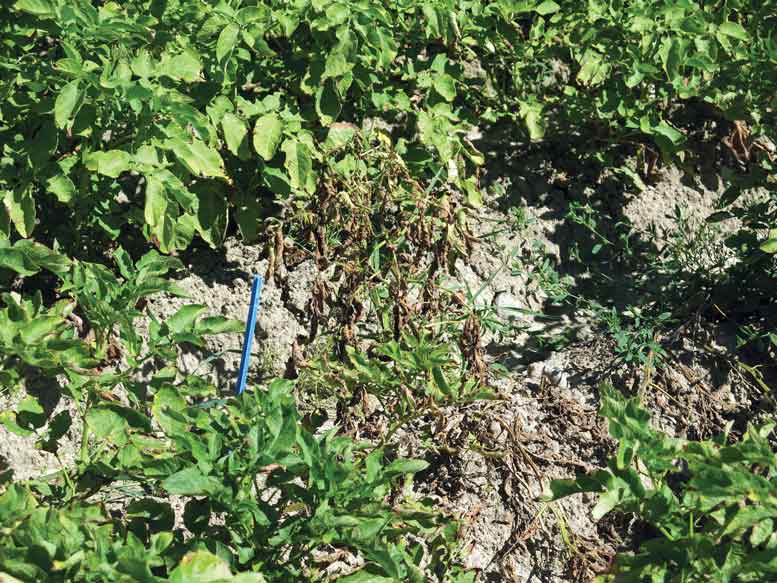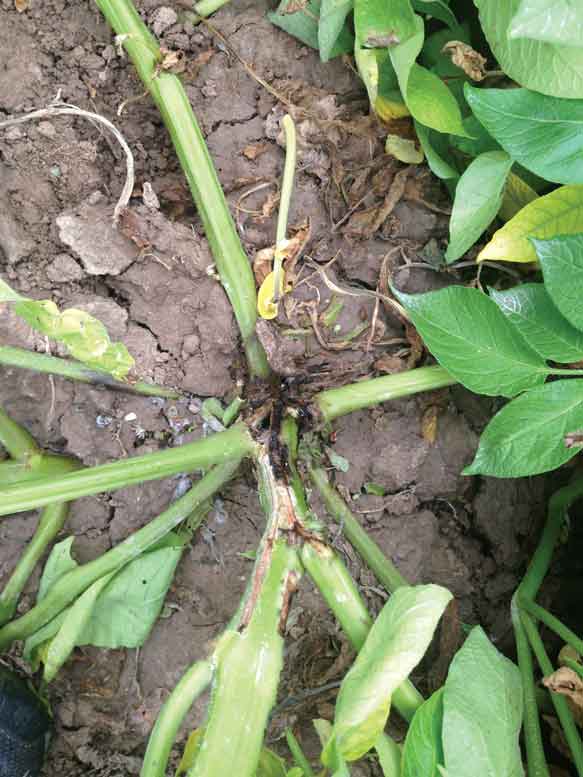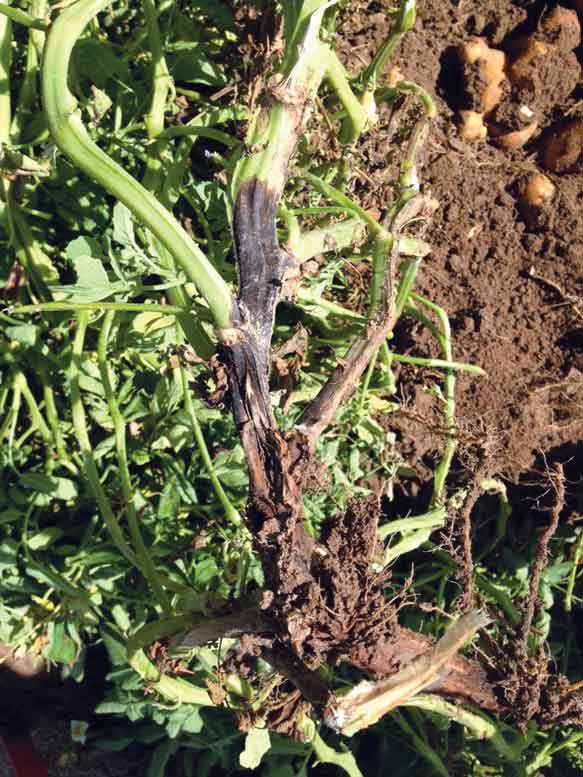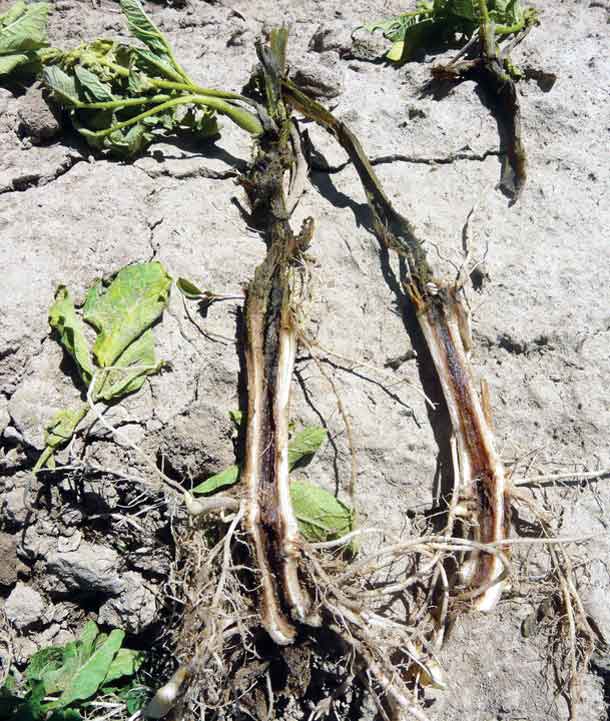The photos show symptoms of Dickeya dianthicola. Dickeya is a relative of the traditional blackleg pathogen Pectobacterium. The type of blackleg caused by Dickeya differs from the traditional Pectobacterium-caused blackleg. Dickeya has an optimal temperature of 77 degrees Fahrenheit (25 degrees Celsius), which is higher than Pectobacterium. As a result, Dickeya blackleg shows up relatively later in the growing season when the soil has warmed up, as opposed to earlier when soil temperatures are cooler. With Dickeya, stems may be green or brown and decay from the inside-out, resulting in hollow stems. Pectobacterium blackleg decays from the outside-in and creates a slimier, smellier decay.




